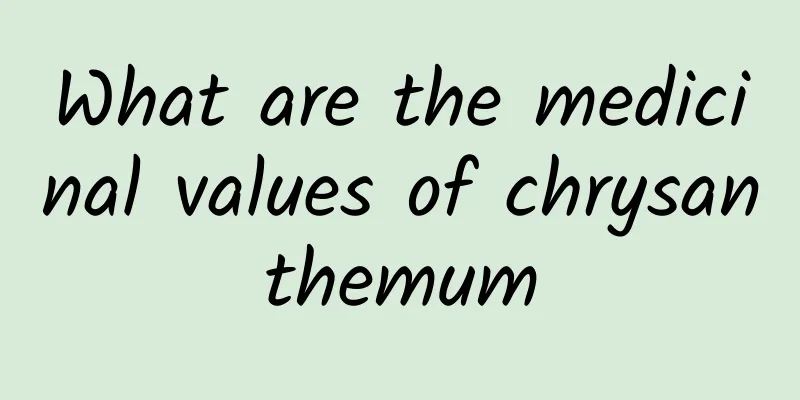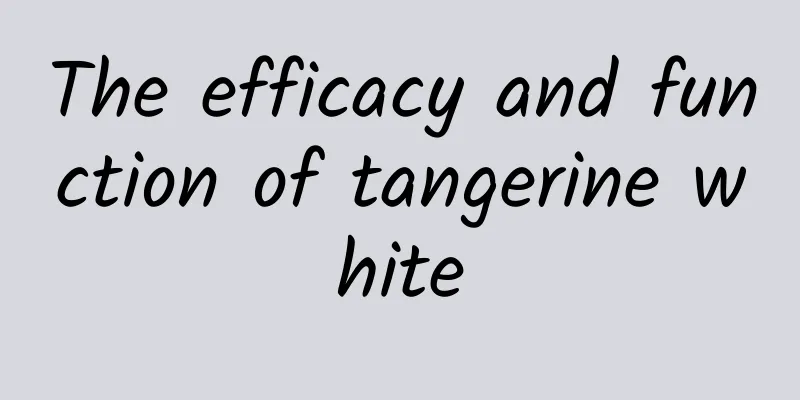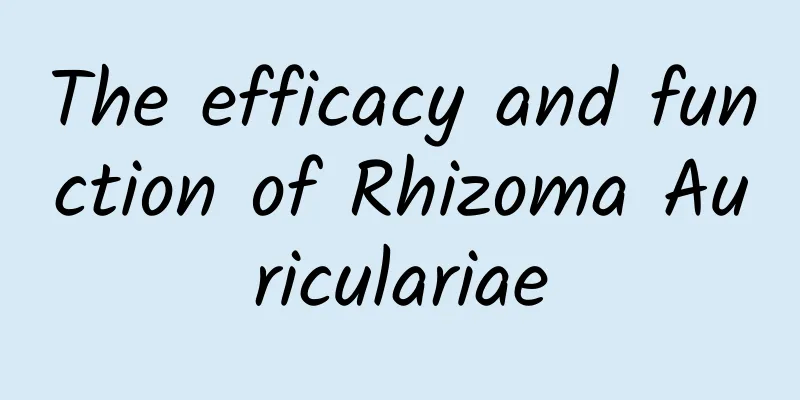What are the medicinal values of chrysanthemum

|
Chrysanthemum is a very beautiful flower with high ornamental value. In fact, in ancient times, chrysanthemum was regarded as a kind of chrysanthemum for tea. Moreover, only royal nobles could drink it and it was a kind of tribute. It has very good effects. It can help us reduce inflammation, improve eyesight, and strengthen the body. It can also treat many minor illnesses and pains. It has many effects. Therefore, the medicinal value of chrysanthemum is relatively high. The efficacy of chrysanthemum The effects and functions of chrysanthemum are very many and good. It is said that using chrysanthemum as bath soup has the functions of removing itching, refreshing the body, skin care and beauty. Especially in the hot summer, drinking a pot of chrysanthemum tea has the functions of clearing away heat, relieving summer heat, and improving eyesight. Below I will give you a detailed introduction to the effects and functions of chrysanthemum. The efficacy of chrysanthemum White chrysanthemum, also known as xiaotanghuang and small white chrysanthemum, is a specialty of Tongxiang area. It, along with Chuju and Boju in Anhui and Huaiju in Henan, are all famous chrysanthemums used for tea in China. Chrysanthemum has a long history of cultivation in China. "Hangzhou Bai Gongju" has always been mentioned together with "Longjing Famous Tea". It was used as tribute in ancient times. Medicinal value Nature and flavor: spicy, sweet, bitter, slightly cold. Function: Dispel wind-heat, soothe the liver and improve eyesight, clear away heat and detoxify. Yellow chrysanthemum has a stronger effect of dispersing and clearing, while white chrysanthemum can also nourish the liver. It is often used to treat exogenous wind-heat or the initial stage of febrile disease, as well as hyperactivity of liver yang, liver-fire eye diseases, heat-toxic sores and swellings, etc. Chrysanthemum, also known as chamomile, is a traditional cultivated medicinal plant in my country. It is one of the eight famous medicinal materials in Zhejiang Province, "Zhe Eight Flavors", and is also the best variety of chrysanthemum tea. Modern medical pharmacology has proven that it has the effects of stopping diarrhea, reducing inflammation, improving eyesight, lowering blood pressure, lowering blood lipids and strengthening the body. It can be used to treat damp-heat jaundice, stomach pain, poor appetite, edema and oliguria. Bathing in chrysanthemum soup has the function of relieving itching, refreshing the body, and protecting the skin and beautifying the skin. Also known as Xiaotanghuang and Xiaobaiju, it is a specialty of Hangzhou area. It, along with Chuju and Boju from Anhui and Huaiju from Henan, are all well-known chrysanthemums for tea production in China. Chrysanthemum has a long history of cultivation in my country. "Hangzhou Bai Gongju" has always been mentioned together with "Longjing Famous Tea". It was used as tribute in ancient times. It is made by steaming and drying fresh white chrysanthemum, a perennial herb. After being brewed with boiling water, the water turns light green and is filled with a refreshing fragrance. Hangzhou chrysanthemum contains ingredients such as chrysanthemum glycin, amino acids and trace vitamins, which have the effects of clearing wind and dissipating heat, improving eyesight and detoxifying. It also has the effects of relieving heat and cooling down, clearing the liver and improving eyesight, refreshing the mind and acting as a diuretic. The varieties of chrysanthemum include Huju, Xiaoyangju, Dayangju, Xiaobaiju, Xiaohuhuang, etc. The origin of chrysanthemum is Tongxiang, which has a long history of cultivation, a large planting area, high yield and good quality. In the past, in order to take advantage of Hangzhou’s popularity, Tongxiang tea merchants named the white chrysanthemum produced in Tongxiang "Hangzhou", and the name has been used to this day. According to Zhejiang traditional customs, "yellow chrysanthemum is used as medicine, white chrysanthemum is used in tea" and yellow chrysanthemum is listed as one of the eight major medicinal materials in Zhejiang. According to medical analysis, chrysanthemum contains ingredients such as chrysanthemum, honey, amino acids and trace vitamins. It is slightly cold in nature and tastes sweet and bitter. It has the effects of dispersing wind and heat, clearing the liver and improving eyesight, as well as detoxifying and anti-inflammatory. It can treat hypertension, migraine, acute conjunctivitis and other diseases. If you use chrysanthemum to make tea as a beverage, it is slightly sweet and fragrant, and is a better choice. Effects Content and efficacy Chrysanthemum is a plant of the Asteraceae family. Its flowers contain 0.13% volatile oil, chrysanthemum glycoside, adenine, cholecalciferol, stachydrine and trace amounts of vitamin A-like substances, vitamin B, amino acids and acacia alkaloids. Joint research by traditional Chinese medicine and Western medicine shows that drinking chrysanthemum tea has the following effects: 1. It has a sedative effect on the central nervous system; 2. It has an antipyretic effect; 3. It enhances capillary resistance and dilates coronary arteries; 4. It has an antibacterial effect. Chrysanthemum decoction and water infusion have inhibitory effects on Staphylococcus aureus, Shigella dysenteriae, Proteus, Salmonella typhi, Salmonella paratyphi, Vibrio cholerae, beta-hemolytic Streptococcus, Escherichia coli, Pseudomonas aeruginosa, Mycobacterium tuberculosis and influenza virus (PR3 strain). Element content of chrysanthemum: Chrysanthemum contains zinc, sodium, iron and other elements, especially iron, which has the highest content. Iron is an important component in cells. More than half of the enzymes in the tricarboxylic acid cycle contain iron or require iron as a cofactor. Iron is closely related to the body's immune defense function, and it can coordinate the metabolism of zinc, calcium, and magnesium in the body. Chrysanthemum contains higher amounts of nickel, zinc and iron, while wild chrysanthemum contains higher amounts of sodium and calcium than chrysanthemum. The biggest difference is that the lead content in wild chrysanthemum is 6 times that of chrysanthemum, which is related to the ecological environment in which they grow, and also warns us humans of the harmfulness of environmental lead pollution. Because chrysanthemum has a low lead content and high mineral content, it has high medical and health value. Tea: The chrysanthemum produced here adopts original ecological scientific technology to dry rose flowers and make a healthy drink that can be brewed into tea, which has the characteristics of pure naturalness. Efficacy: Clears away heat and detoxifies, soothes the liver and improves eyesight, loses weight and beautifies. Brewing method: 1. Take about 3-4 chrysanthemums and put them into a 400ml glass; 2. Add boiling water (100 degrees) about 70% to 80% full, cover with a lid, soak for 3-5 minutes, and drink while hot; 3. Drink until 1/3 of the tea soup is left, then add boiling water to brew, so that the concentration of the tea soup is more uniform; 4. You can add sugar or honey, or mix it with any kind of tea you like, such as French rose, wolfberry, etc. After reading the above introduction, you should know how high the medicinal value of chrysanthemum is. I believe everyone has a general understanding of chrysanthemum. This is a tea with high health value. Drinking it regularly can achieve the effects of clearing away heat and detoxifying, losing weight and beautifying. When brewing, remember to use medicinal hot water and add a little honey for better results. |
<<: What are the medicinal values of Albizzia julibrissin
>>: What are the medicinal values of tortoise shell?
Recommend
What are the specific methods of taking honeysuckle?
Speaking of honeysuckle, I believe everyone shoul...
Seven white marble columns from the Old Summer Palace return home! Is white marble "jade"?
On October 13, the State Administration of Cultur...
Octopus pseudoghost: The mysterious animal is here
Produced by: Science Popularization China Author:...
Tens of millions of years have passed, and these two Cretaceous dinosaurs are still fighting
In 1971, paleontologists discovered two extremely...
Small soap bubbles hide big secrets
Blowing bubbles is a small game we often played w...
If I had a hundred eyes, what would I see? - The evolution of eyes from scallops
The winning works of the 2023 "China Science...
The efficacy and function of bald acne flower
I wonder if you have ever heard of the baldness f...
RUNTO: In July 2023, the online market sales of e-sports monitors in mainland China reached 315,000 units, a year-on-year increase of 86%.
According to the latest report released by RUNTO ...
Why are Chinese characters called “square characters”?
In the history of Chinese characters, people usua...
The efficacy of monk fruit flower
Luo Han Guo is a southern plant. This fruit is qu...
Is the world seen through cat’s eyes the same as the world seen through human eyes?
When we play with cats, what we like to look at m...
How many petals does a snowflake have? You may not know
When talking about the most wonderful subject in ...
Bone supplement effect and function
Drynaria fortunei is a relatively common Chinese ...
The efficacy and function of Eurya
Eupatorium has a long history, and up to now, its...









